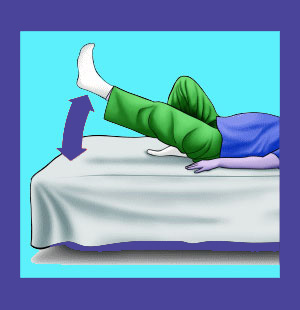
Have you been subjected to the straight leg raising test scam? This test holds virtually no clinical value and is often used as a torture for lower back pain and sciatica sufferers. The straight leg raising test can not diagnose a herniated disc, so don’t fall for it and put yourself through unnecessary pain.
What is the straight leg raising test and why is it used? Since it is well known to have almost no actual use, why do virtually all clinicians tend to utilize it in the modern medical industry? Most importantly, does the test tend to provide opportunity to financially exploit naive patients?
This dialog focuses on the use of the straight leg raising test in lower back pain sufferers. We will provide some important facts about this diagnostic evaluation method, as well as dispel some commonly held myths about the test.
What is the Straight Leg Raising Test Scam?
The straight leg raising test is almost universally used when evaluating lower back pain and sciatica. The patient will be asked to lie on their back, supine position, on an examination table. The care provider will take hold of one leg at a time and keep it straight, while simultaneously raising it upwards. The patients will be asked to report when pain begins and where it occurs.
What most patients do not know is that this test produces pain in virtually all people with any type of lower back pain or sciatica, as well as many people who do not have lower back pain or sciatica. Pain generally comes from muscular sources, rather than neurological. Tight hamstrings is the most common causation of discomfort.
Some care providers use this test and claim that it can accurately predict the existence of herniated discs. This is a lie. The test has no efficacy for predicating herniated or degenerated discs. Care providers are confident making this claim since the vast majority of people will demonstrate one or more intervertebral disc abnormalities in the lower back, which will be found once subsequent imaging studies are ordered and evaluated.
When is the Straight Leg Raising Test a Scam?
There is really never any reason to use this test, except to judge the range of motion in the leg during physical therapy. Of course, the test will hurt! It is supposed to hurt in people with any type of back pain and rarely disappoints in this regard. Therefore, it shows no real value for general clinicians.
Worse still, in some cases, opportunistic chiropractors, massage therapists and even some physicians might use the test to frighten patients into believing they have a herniated disc which is responsible for their pain. This is a trick which is often part of a larger nocebo effect perpetrated against the patient in an effort to maximize the profitability of their care. Most of the care providers who utilize such tactics know fully well that herniated discs are virtually universal in the lower lumbar spine and that these disc issues are seldom pathological. They are, however, very profitable…
Any care provider who suggests that the straight leg raising test can confirm the presence of a herniated disc in the lower back should be avoided (if not brought up on charges for fraud)…
Avoiding the Straight Leg Raising Test Scam
Just undergo medical imaging whenever possible to positively diagnose disc issues in the lower back. This is the simple solution for patients who fear that this test might have been used as a weapon of medical propaganda against them to justify potentially unnecessary treatment.
Medical imaging will not diagnose the cause of your pain, but it will scientifically narrow down the possibilities and provide a good look at what exactly is going on in your spine without guessing…
While we are on the topic of scams, this test is only part of a much larger scam in modern healthcare, and that is the simple truth that most herniated disc which are blamed for causing pain are completely innocent. Herniated discs are really very normal and rarely cause any pain. When they are symptomatic, they rarely require treatment, as the symptoms will resolve organically more often than not. When a disc is truly pathological, then and only then is treatment justified and this accounts for a very small percentage of the total diagnosed patient population of intervertebral abnormalities.
Lower Back Pain > Diagnosis of Lower Back Pain > Straight Leg Raising Test





